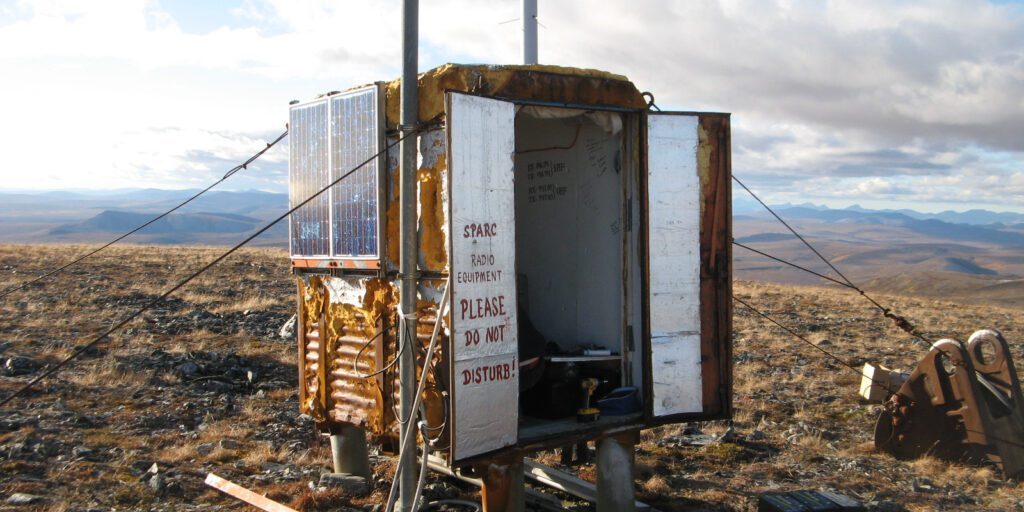For the last two months, since at least Sept 18, Nome’s HAM Radio network has been inactive. The regional HAM Radio club is working to fix the issue that shut them down, even though they didn’t cause the equipment to fail.
The Seward Peninsula Amateur Radio Club, also known as SPARC, is headed up by Wesley Perkins of Nome. Perkins says he first noticed something was wrong with their equipment at one of their repeater sites, a few miles outside of town, around the 18th of September.
“And so when we came to town and did some research, we found out that the outer marker building at the VOR/HAM Radio site, had been moved from its location. And of course, they [the FAA] took the antenna and all the equipment out. So, it basically shut down the local system that ties into the receivers on the hilltop.”
– Wesley Perkins
SPARC operates about a half dozen receivers across the Seward Peninsula, along with a hub receiver in downtown Nome. Perkins says the majority of these operate on solar power, and the one located at the VOR site will also be switching over to that natural power source soon.
According to Perkins, the Federal Aviation Administration used to own the outer marker building at the VOR site just outside of Nome. But within the last decade, the FAA abandoned the site and transferred ownership of the building to SPARC.
The FAA confirmed with KNOM via email that the agency no longer owns or maintains the outer marker building, and that responsibility was given to SPARC.
Allen Kenitzer, spokesperson for the FAA’s regional office, declined to be interviewed for this story.
Perkins says around the same time SPARC’s network went down in September there was also an FAA representative in town going through the agency’s various sites.
“The FAA had a contractor in town that had cleaned up some sites, and some type miscommunication [resulted in] the equipment at the site was basically moved. We got most of that all sorted out so that we could get back in the same location that we were at [before].”
The FAA says it relocated the outer marker building, including its contents, off of FAA property and onto a location that SPARC designated. Perkins says the new location is basically the same as before, as it is still on the road leading to the VOR. The land where SPARC’s equipment is located is owned by Sitnasuak Native Corporation. SPARC has an agreement to lease the land from SNC for a few years at a time.
The regional HAM Radio club’s communication system is used by radio enthusiasts, emergency responders, and snow machiners within a roughly 100-mile radius surrounding Nome. Even though HAM Radio is not used in the Norton Sound region as often today as it was back in the 1970s and 80s, Perkins believes it is still an invaluable option for emergency communications.
SPARC’s President says in the near future the system will be operational again so the Nome Volunteer Search and Rescue team can resume using it for local search efforts.
“Well first thing, my staff or I will test it thoroughly to make sure it works. And then we’ll also put a notice out on Nome Announce, and Facebook, and stuff like that. Then people can go out and use it. So, it’ll be something that is announced, and people will know [when] it’s back up and running.”
Perkins says residents in Teller, Council, and Nome all use SPARC’s network, along with travelers going anywhere between Serpentine and Nome. The radio network is also heavily used during the annual Nome-Golovin Snowmachine race to keep tabs on the racers throughout the trail.
The FAA says it is assisting SPARC in resolving the issues stemming from the outer marker building’s relocation.
For more information on the Seward Peninsula Amateur Radio Club, go online to sparcnome.com.
Image at top: One of SPARC’s many repeaters spread throughout the Seward Peninsula to keep their radio network open. This is the Skookum repeater during summer time. Photo provided by Wesley Perkins of Nome, used with permission.




